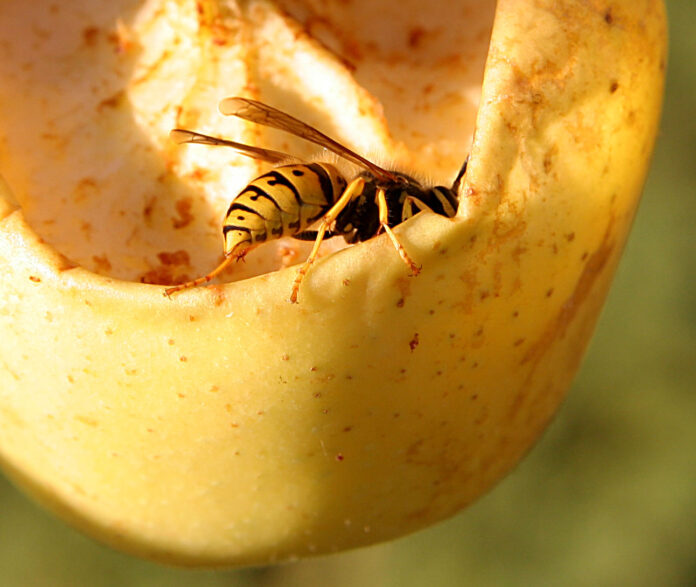
BY HARRY WEEKES
Late in September, on one of those beautiful early fall days, I sat with a group of friends, gathered around a picnic table, finishing off a smattering of appetizers. In swooped the first wasp—a yellow jacket.
I marvel at yellow jackets around any food containing meat. I particularly like the bold ones who fly right onto the piece of ham you are holding, carve out a crescent as quickly as possible, and then disappear to stash the food before returning to repeat the process again.
My companions were less enamored of wasps as the “I hate these things” comment announced. What ensued was one of those peculiar conversations that originally I was in, and then gradually I became “adjacent to.”
The prime wasp conversant represented Stanford University, and was joined by graduates of Berkeley, Dartmouth and Princeton, to name but a few of the major universities represented. I include this as foreshadowing to the rest of the discussion.
Beyond “I hate these things,” other salient comments were: “They annoy me so much,” “Do these things serve any purpose?,” and “How do you get rid of them?”
This last remark led to a discussion of a foolproof wasp trap whose design was so genius simply because it “takes advantage of the fact that wasps have to drop down before they take off.” The design is to “paint” cat food onto the underside of a board, then place the board over a bowl of water. The wasps crawl to get the cat food then take off into the water where they drown.
This is the kind of conversation that stupefies me on multiple levels.
The first, the ongoing need to define the worth of something through a human lens. “What good is this thing for me?”
The second, the definitive declaration of something that is not true—“Wasps must drop down before they take off.” Really? Then how do they ever get off the floor?
The third, the immediate use of an example that counters a previous statement. “So, you’re telling me that wasps have to drop down before they take off, and the trap you set has them effectively upside down where they take off by jumping up?”
And finally, for now, that all of this took place amidst as many smartphones as there were people, and on the edge of someone’s vegetable garden.
Several minutes, at most, of thinking about this scenario and observing the wasps themselves, and then taking 15-30 seconds searching yellow jackets would give you this information: wasps can take off in a bunch of different ways, mostly by pushing off with their legs and jumping into the air (why forcing them to take off where their ‘up’ is actually into water is so effective). You will notice this every time a wasp carves out a bit of your ham sandwich.
You will also find the answer to a couple of questions: “Why do they like meat so much?” and “What do they do for me?” Well, these yellow jackets are prime predators of flies and caterpillars and many insects that simply love to ravage vegetables. The meat they are used to capturing is all the creatures crawling around on and devouring the leaves of the plants in your garden. “You know, that garden right behind you.”
We live in a time when we choose to know so little about so much. My hope, as the days warm and we get back into the insect-y time of year, is that we’ll sit back and marvel at the monumental diversity of this world, with the gift of wonder and curiosity answer enough to “What good is this thing to me?”
Harry Weekes is the founder and head of school at The Sage School in Hailey. This is his 52nd year in the Wood River Valley, where he lives with Hilary and one of their three baby adults—Simon. The other members of the flock are Georgia and Penelope (Georgia recently fledged from Davidson College in North Carolina and Penelope is at Middlebury College in Vermont).


